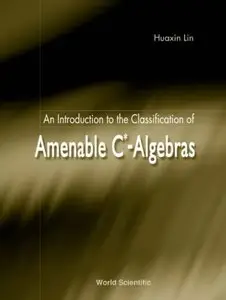Huaxin Lin, "An Introduction to the Classification of Amenable C-Algebras"
2002 | ISBN-10: 9810246803 | 332 pages | PDF | 4 MB
2002 | ISBN-10: 9810246803 | 332 pages | PDF | 4 MB
The theory and applications of C*-algebras are related to fields ranging from operator theory, group representations and quantum mechanics, to non-commutative geometry and dynamical systems. By Gelfand transformation, the theory of C*-algebras is also regarded as non-commutative topology. About a decade ago, George A. Elliott initiated the program of classification of C*-algebras (up to isomorphism) by their K-theoretical data. It started with the classification of AT-algebras with real rank zero. Since then great efforts have been made to classify amenable C*-algebras, a class of C*-algebras that arises most naturally. For example, a large class of simple amenable C*-algebras is discovered to be classifiable. The application of these results to dynamical systems has been established. This book introduces the recent development of the theory of the classification of amenable C*-algebras - the first such attempt. The first three chapters present the basics of the theory of C*-algebras which are particularly important to the theory of the classification of amenable C*-algebras. Chapter 4 offers the classification of the so-called AT-algebras of real rank zero. The first four chapters are self-contained, and can serve as a text for a graduate course on C*-algebras. The last two chapters contain more advanced material. In particular, they deal with the classification theorem for simple AH-algebras with real rank zero, the work of Elliott and Gong. The book contains many new proofs and some original results related to the classification of amenable C*-algebras. As well as providing an introduction to the theory of the classification of amenable C*-algebras, it is a comprehensive reference for those more familiar with the subject.



